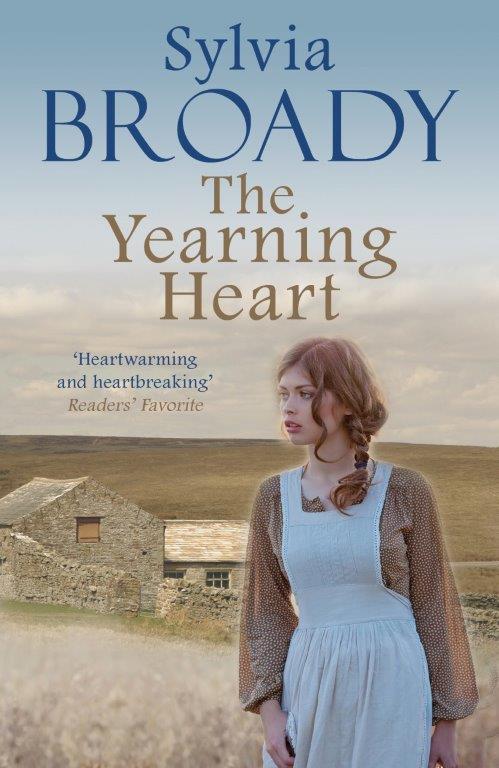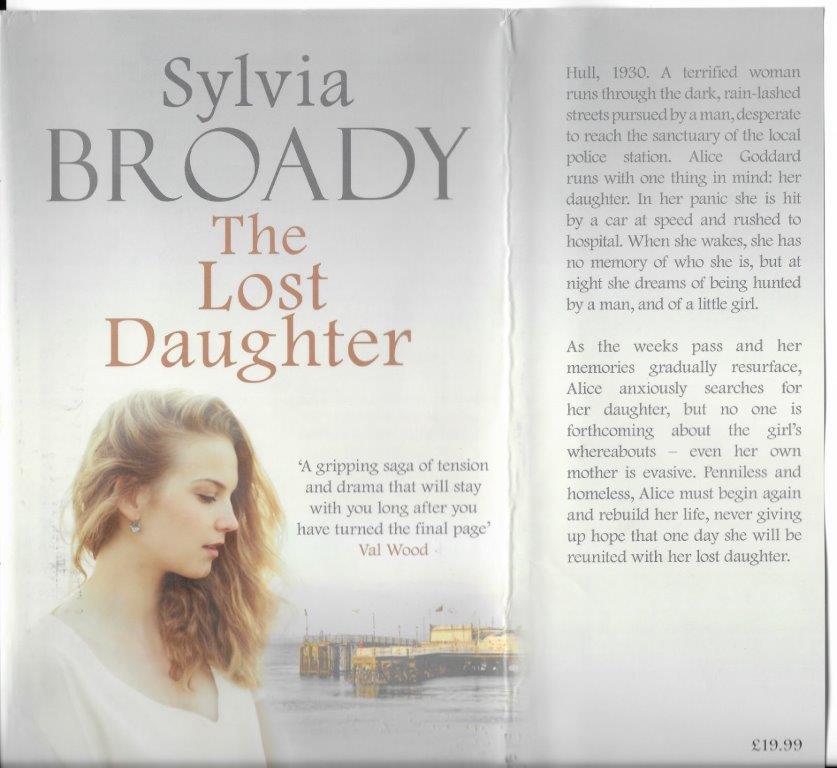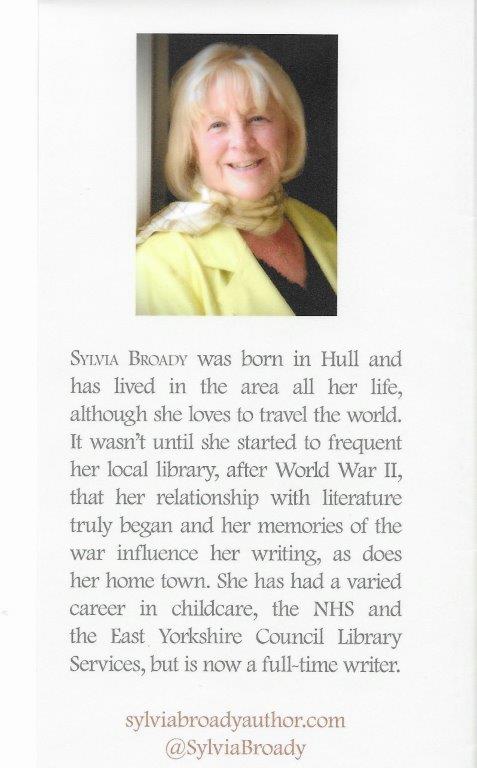Sometimes you find a niche where you know you just fit. That’s how I felt when I joined the Romantic Novelists’ Association and then the RNA Saga Writers group on Facebook. I was made very welcome and, in fact, was interviewed:on the Write Minds blog https://bit.ly/2VhEPg7, run by two of the members:Francesca Capaldi Burgess and Elaine Roberts.
I wanted to discover how and why, like me, they wrote family sagas, with a little romance thrown in. So I asked if any of them would be interested in discussing that. I certainly received some fascinating answers.
This is the fifth of my interviews with a Romantic Saga Author, and today I’m delighted to be talking to Sylvia Broady.
Welcome, Sylvia, lovely to see you here today.
Thank you so much for inviting me to your blog, Judith.
Let me start by asking, When you started writing your book, did you intend to write a family saga – or series of stories rather than one story?
Yes, I always did intend to write my sagas as stand-alone books, though reading your question, Judith, made me consider, what if?
DAUGHTER OF THE SEA, my latest book is set in the 1930s to 1940s, stems from a novella I wrote many years ago. That story was set in the 19th century, and the main male character, Christian Hansen, is the grandfather of the present day Christian Hansen. A wealth of historic and social information for the deep sea fishing community, most written about men, very little written about women. And I write about strong women.
THE LOST DAUGHTER spans over twenty-five years, 1930s to 1950s and is one story of mother and daughter. The long, often a dangerous and thwarted journey of their lives, apart and together.

THE YEARNING HEART spans twenty years, 1940 to 1960, a complex story, centres around the female protagonist Fran. It is her story, which is intertwined with her mother, her sister, her daughter, and her son, their stories. Plus, her relationship with the love interests is complicated. On reflexion, cutting 40,000 words for my then publisher, I would have written a series. First Fran’s mother, then Fran’s story, and of her son who went to live in Australia.
A TIME FOR PEACE is definitely a stand-alone story. 1945, the end of World War 2 and peace, which brings many challenges. Originally a short story, which I knew deserved to be a novel. It originated from an incident told to me by my late husband. As a young boy, he witnessed the last killing raid by the Luftwaffe on the city of Hull.
Which do think is more important, the family story or the romance?
It depends on the storyline. I write sagas, set mainly in the 20th century. Family orientated, with romance, I am a big believer in that romance makes the world go round. I enjoy listening to popular songs, and most of them have a romantic theme. And in the stories I write, romance is intertwined with the family story, and the social history of the time. Though forbidden love can play havoc with the family life, and tragedy can turn a family and a romance upside-down.
How important do you think it is to research the historical background, locations, features of the era, your characters live in
Most important. I have to admit; I love the historical research of the period I am writing about. What clothes they wore, food they ate, education, the rights or non-rights of women, working-class attitudes, and social history of the time. Music of the era, the pictures and film stars, music hall and entertainers. World War 2 brings freedom to women to do men’s work and fight for the country and peace.
DAUGHTER OF THE SEA, my latest book is set in the Hessle Road area of Kingston upon Hull, and the fish dock is Saint Andrews, between 1930s to 1940s. The men who go deep sea fishing to distant waters are trawlermen, not fishermen, and they are away for 3 weeks and only home for about 3 days. And known as the “Three Day Millionaires”. It is the strong women of this close-knit community who hold the family together. Little is written about the women, and researching I found that when a trawler sank with all-hands, the women received no money from the trawler owners. Their children would be sent to the orphanage, so as well as losing their husbands, they also lost their children. And the children lost both parents. This, and other complications, is the heart of the story I write about. How these strong women fought to keep their children and to survive?
When I wrote A Time for Peace, 1945-1946, I was delighted to receive an email from a reader in Canada, telling me she lived in the area when young and knew the streets and other place name I wrote about. If possible, I like to talk to eye-witnesses. I spoke to a dear lady who in March 1945 saw the Luftwaffe flying so low she could see the pilot as he drop his bomb. He then went on to gun down and kill 12 and injure 22 patrons, leaving the Savoy cinema.

The Lost Daughter also covers WW2 and heroine, Alice, a nurse, joins the WAAF and has special training to fly in a Dakota on missions to the war zones to bring back the injured. They are allowed chewing gum and an orange before each flight. Their medication equipment in their panniers also contains morphine and oxygen.
The Yearning Heart is set around the river and area near to where I live. I had taken artist licence with place names of pubs and streets, and added an extra lane, but local readers still recognised the area. I am a fan of the TV programme, “Long Lost Families”, which fascinated me. My story is about twins separated at birth and a mother’s quest to find them.
How do you manage to keep track of all the characters in your book/s over a stretch of time?
When I start writing the first draft of my book, I have a clipboard, A3 size. On the left-hand side, I write down my main characters and all their relevant details: d.o.b background, occupation, relationship to other characters, etc. On the right side of the clipboard, are details of minor characters and how they interact with the storyline and other characters.
I also have a notebook for each book, in which I write a summary of each chapter, the characters, location, and everything connected to the story and timeline. This keeps my finger on the pulse and works well for me. In the past, I have tried other methods, but this system works well for me.
A saga demands change, both in its characters and its world, How important is the time period to the development of your narrative?
In my latest book, Daughter of the Sea, time span is 9 years. Jessica, the main character is a young, naïve girl in 1937 and over the years, she experiences, heartache, betrayal, disaster, WW2 and all its tragedies, and finally, true love. She has grown into a compassionate woman of many strengths.
The Lost Daughter spans twenty-five years. Alice is the mother and Daisy is her missing daughter. It is a long, hard road to find her. In the early 1930s a young frightened mother, married to a wife beater, Alice finds herself homeless and penniless, and her daughter has been fostered to a person unknown. Her determination to survive and find her daughter, shapes her into a strong woman who will succeed.

A Time For Peace set 1945-1946 and the aftermath of war brings more heartache, especially for Rose, disillusioned by love. She sets out to help others, becoming involved in their heartaches and family problems, bringing joy into many lives and in doing so, finds her soulmate.
The Yearning Heart spans twenty years, when age 16, Fran is raped by her sister’s husband. Sent away from the family home, she gives birth to twins. The twins are cruelly taken from her and it becomes her quest in life, to find her children and to be reunited with them. But every avenue she searches is blocked and filled with lies. It twists and turns, jumping upside down, leaving her facing her greatest challenge. The decision she makes.
About Sylvia:

My latest news for Daughter of the Sea – paperback publication date 18th February 2021
My website: https://sylviabroadyauthor.com
Facebook: https://www.facebook.com/SylviaBroadyAuthor
Twitter: https://twitter.com/SylviaBroady
I am a member of the Romantic Novelist Association. The Beverley Chapter.
Also The Historical Novel Society and The Society of Authors.
To sum me up in 4 words: My passion is Writing.



Lovely interview.
LikeLike
Thank you
LikeLike
A very full interview on aspects of writing the Family Saga. I’m always interested in how authors plan their novels. The fact that two novels came from earlier shorter works is a fascinating insight. Never throw anything away, eh? Thanks to both Sylvia and to Judith for hosting.
LikeLike
Thanks, Linda, I’ve had saga writers on my blog for the last four Tuesdays now and more to come. It’s fascinating how each write.
LikeLike
Fascinating!
LikeLike
Pingback: Smorgasbord Blogger Daily – Monday 4th January 2020 – Carol Taylor, Jennie Fitzkee, Judith Barrow | Smorgasbord Blog Magazine
Thank you so much, Sally – your support is much appreciated. x
LikeLike
Wonderful interview Judith. Thanks for introducing us to Sylvia and the extra insights into her lovely book ❤
LikeLike
And thank you, Debby, for your support,as always. XX
LikeLiked by 1 person
❤
LikeLike
It is very interesting to read about these family sagas, Judith. Thank you for introducing Sylvia.
LikeLike
Thank you, Robbie. I’m loving the interviews with the saga writers.x
LikeLike
Thank you all for your lovely comment, which I appreciate. And many thanks to Judith for inviting me to feature on her blog. I have enjoyed being in touch with readers and other writers. I find it so inspiring and uplifting. Best wishes for a happy and healthy 2021 Sylvia Broady x.
LikeLike
Always a pleasure, Sylvia x
LikeLike